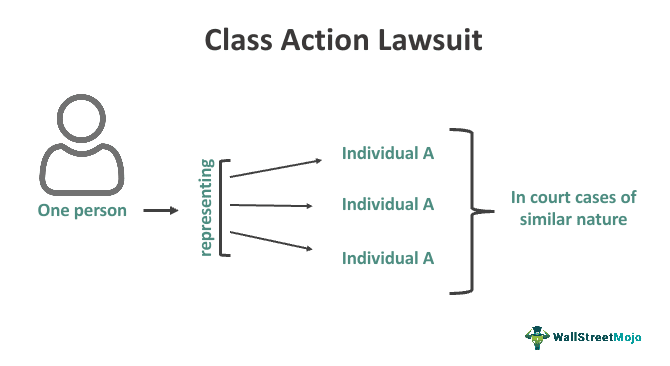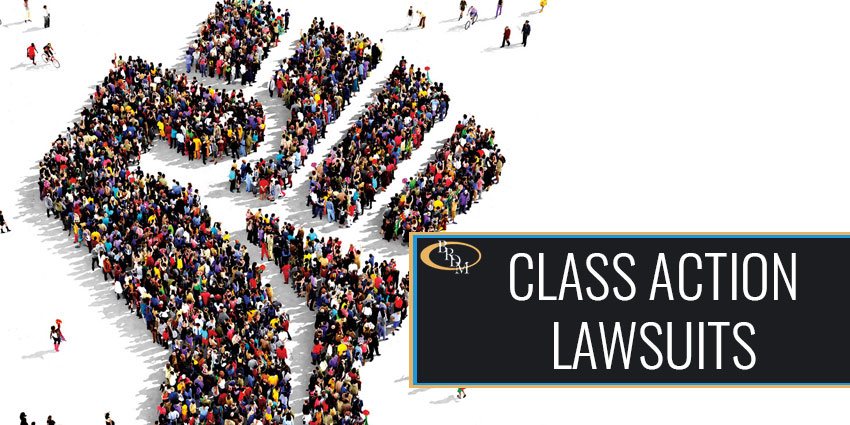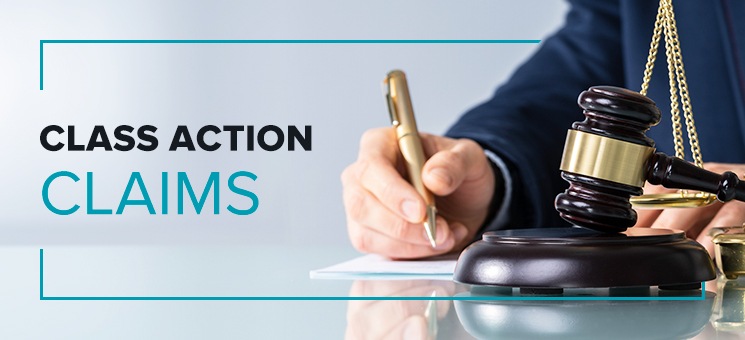Justice for All: The Role of Class Action Lawsuits in Securing Consumers
Wiki Article
Understanding Class Action Claim: An Overview for Attorney
Course action claims have actually come to be an integral part of the legal landscape, permitting the debt consolidation of numerous claims right into a solitary activity. For attorneys, understanding the complexities of course activity litigation is crucial in properly representing their customers. This extensive overview discovers the basics of course action suits, from identifying possible class members to navigating the accreditation procedure. Additionally, it explores essential strategies for handling course action lawsuits and provides understandings into obtaining and working out approval for settlements. By delving right into the complexities of class action lawsuits, this guide furnishes lawyers with the knowledge and devices needed to efficiently browse this intricate location of law.The Essentials of Class Activity Suits
Class activity suits are a legal mechanism used to combine comparable claims from a team of individuals right into a single suit, offering a affordable and efficient approach to looking for justice and resolution. This kind of lawsuit permits a representative plaintiff, acting on behalf of the entire class, to bring a claim versus an accused that has actually presumably caused damage or went against the civil liberties of several individuals.The fundamental needs for bringing a class action lawsuit include numerosity, commonness, typicality, and competence of depiction. Numerosity describes the fact that the course should be so large that joinder of all members would be unwise. Commonness implies that there need to be common concerns of legislation or truth that are shared by all participants of the class. Typicality calls for that the insurance claims of the depictive plaintiff are typical of the cases of the entire course. Competence of depiction ensures that the representative plaintiff will sufficiently represent the interests of the entire class.
Class activity legal actions can be beneficial for both accuseds and plaintiffs. For complainants, it allows them to pool their resources and share the costs and risks connected with lawsuits. It likewise gives an equal opportunity when they are up versus big firms or entities. For offenders, it supplies the chance to effectively fix multiple claims in a solitary claim, preventing the requirement to resist countless private legal actions.
Identifying and Assessing Possible Course Participants
After developing the fundamental demands for a class activity lawsuit, the following action is to determine and examine potential course members. If they fulfill the required standards., this procedure involves determining that might be component of the course and examining their insurance claims to determine.To recognize possible course members, legal representatives normally conduct extensive research study and gather relevant information. This may entail reviewing records, conducting meetings, and examining documents to recognize people or entities that might have been affected by the supposed wrongdoing. It is essential to establish a thorough and clear listing of prospective course participants to guarantee that all affected events are included in the suit.
As soon as potential class members have been identified, the next action is to analyze their cases. If they fulfill the legal needs for course certification, this entails examining the qualities of each specific claim to establish. Legal representatives should carefully assess the facts, proof, and lawful theories of each possible course member's insurance claim to ensure that they have a feasible situation.
Analyzing prospective course members also includes identifying whether they meet the course definition and have endured comparable harm as a result of the offender's activities. This requires comparing the truths and conditions of each potential course participant's situation to the accusations and lawful concepts placed forth in the suit.
Navigating the Class Accreditation Refine
To successfully browse the course accreditation procedure, lawyers must diligently abide by the procedural demands stated by the court. Class certification is a crucial action in a course action claim, as it identifies whether an instance can continue as a course action, standing for a group of individuals who have similar insurance claims against an accused. The procedure includes satisfying specific requirements, such as numerosity, commonality, typicality, and competence of representation.Firstly, lawyers have to develop numerosity by showing that the course is so large that private joinder is impractical. This needs a thorough analysis of the defenses and insurance claims included.
Following, legal representatives need to show typicality, which means that the depictive plaintiff's cases are common of the cases of the class participants. This makes sure that the interests of the depictive plaintiff line up with the rate of interests of the class. Legal representatives should show competence of representation, indicating that the representative complainant and their guidance will relatively and adequately represent the passions of the class.
To navigate this process efficiently, lawyers need to extensively prepare by carrying out comprehensive study, gathering evidence, and establishing an engaging debate that pleases each of these standards. They should likewise be prepared to respond to any type of difficulties or arguments raised by the offender. By vigilantly sticking to the procedural requirements established forth by the court, legal representatives can enhance Full Report their possibilities of obtaining class accreditation and progressing the passions of the course members.

Key Strategies for Managing Course Activity Lawsuits
Upon effectively navigating the class accreditation process, attorneys have to after that apply crucial approaches for properly handling course action litigation. These techniques are vital to make sure that the instance continues smoothly and successfully, ultimately optimizing the possibilities of a positive result for the course participants.
One secret approach is to develop a solid and natural legal team (Class action lawsuit). This entails putting together a team of attorneys with competence in course action lawsuits, along with various other appropriate locations such as the particular industry or topic click for more associated with the situation. A well-rounded team can bring different point of views and skills to the table, enhancing the general efficiency of the litigation
Another important strategy is to develop a well-balanced and thorough lawsuits strategy. This plan ought to describe the overall objectives of the case, along with the details lawful theories and arguments that will certainly be gone after. It ought to also consist of a timeline and spending plan to ensure that the instance remains on track and within the designated resources.
Furthermore, lawyers ought to actively involve with the course members throughout the lawsuits process (Class action lawsuit). This consists of giving normal updates on the development of the case, looking for input and comments from the course participants, and dealing with any kind of concerns or inquiries they may have. By fostering open interaction and collaboration, legal representatives can develop trust and assistance amongst the class participants, which can be critical in achieving an effective resolution
Settling Class Activity Suits: Arrangement and Approval
When it involves clearing up class activity lawsuits, find more information efficient arrangement and acquiring authorization are necessary action in attaining a resolution. Course action legal actions are complicated and entail a lot of complainants, making it essential to get to a negotiation that is adequate and reasonable to all celebrations entailed.
When a negotiation contract is gotten to, it has to be accepted by the court. The court's duty in this process is to guarantee that the settlement is fair, sensible, and appropriately protects the interests of the class participants. The court will certainly take into consideration factors such as the nature of the claims, the strength of the proof, the possible recuperation for the course participants, and any type of objections increased by class members.
Getting court authorization is crucial as it gives finality to the negotiation and shields the rate of interests of the class members. It ensures that the negotiation is binding and enforceable, and course participants can receive their rightful payment.
Conclusion

Course action lawsuits have actually become an integral component of the legal landscape, permitting for the loan consolidation of several cases into a solitary action. Course certification is an essential step in a course action claim, as it determines whether a situation can proceed as a class activity, representing a group of people who have comparable claims against an offender. By diligently adhering to the step-by-step demands established forth by the court, attorneys can increase their possibilities of acquiring course certification and progressing the passions of the class members.
The court will certainly consider elements such as the nature of the claims, the strength of the evidence, the prospective recuperation for the class members, and any type of arguments raised by class members.
By determining and analyzing potential class members, attorneys can establish the viability of a class activity legal action.
Report this wiki page